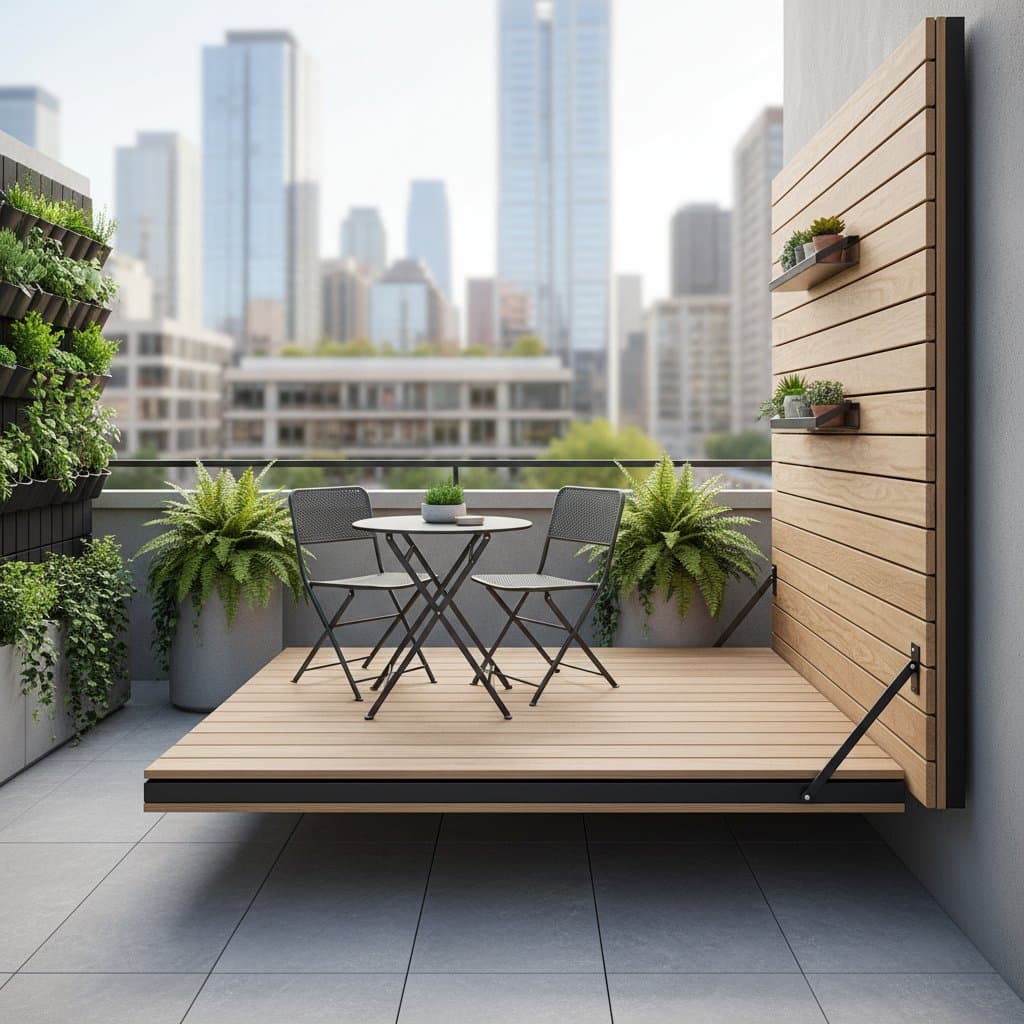Transform Your Deck with Soil-Grown Living Seats
Decks often present a clean appearance yet feel rigid and unchanging. When you sit upon them, a desire for vitality emerges. A soil-grown living seat addresses this by converting a deck section into a soft, vegetated resting area that evolves with the seasons.
The objective remains straightforward: construct a bench or stool topped with living grass or groundcover rooted in soil. This guide details planning, planting, and maintenance to ensure the feature remains vibrant and durable.
Overview
A living seat consists of a bench, ottoman, or low platform that accommodates a shallow soil layer supporting live plants. Options include grass, clover, or creeping thyme, which create a verdant cushion. The underlying frame provides stability, while the surface offers a dynamic texture suitable for hands or bare feet.
Benefits extend past aesthetics. The vegetation lowers ambient temperatures on the deck, dampens noise, and captures airborne particles. Compared to wood or stone, grass seating minimizes reflective light, fostering a serene environment. This approach eliminates reliance on synthetic cushions.
Proper construction allows a living bench to endure for years through routine watering and pruning. In colder climates, remove the soil layer during winter for dry storage.
Tools and Materials
Assemble these essential items for a 4-foot by 2-foot bench.
- One wooden or metal frame, at least 12 inches high, treated for exterior durability
- One waterproof liner, such as pond-grade plastic sheeting
- One drainage mat or a 2-inch layer of gravel
- Two cubic feet of lightweight potting soil
- One pound of grass seed or 16 groundcover plugs
- Hand trowel, drill, and staple gun
- Watering can or hose equipped with a gentle spray nozzle
Select rot-resistant cedar lumber or composite materials. For direct contact seating, apply natural sealants and avoid chemical treatments.
Steps
Step 1: Prepare the Frame
Verify that the bench or box withstands the load of saturated soil, approximately 15 pounds per square foot. Secure corners using metal brackets for added reinforcement. Sand rough edges to prevent injury and ensure smooth assembly.
Step 2: Line the Interior
Attach the waterproof liner to the inner walls with staples or adhesive tape. Create small drainage holes along one lower edge. Position the gravel layer or drainage mat at the base to facilitate excess water flow.
Step 3: Add Soil
Fill the lined frame with potting mix to a uniform depth, maintaining a 1-inch gap from the top edge. Smooth the surface manually. Select soil that promotes root expansion, such as a blend with perlite for aeration.
Step 4: Plant the Surface
Distribute grass seeds evenly or position groundcover plugs at 3-inch intervals. Press them lightly into the soil for initial contact. Apply a fine mist of water to achieve consistent moisture without displacement.
Step 5: Position the Bench
Place the assembly in a location receiving partial sunlight. Grass requires a minimum of four hours of direct light daily, whereas creeping thyme or moss tolerates shaded conditions. Restrict foot traffic until roots establish firmly, typically two to three weeks.
Step 6: Establish Growth
Maintain soil moisture during the initial two weeks by watering daily if necessary. As vegetation densifies, prune every 10 to 14 days using scissors or shears. This practice promotes uniform height and enhances seating comfort.
Safety Considerations
- Confirm weight capacities prior to accommodating multiple occupants.
- Don gloves during soil handling or fertilizer application.
- Position electrical elements, such as cords or lights, distant from moist areas.
- Secure a non-slip mat beneath the bench on polished deck surfaces.
Troubleshooting Common Issues
Yellowing grass indicates potential drainage problems. Excess moisture may drown roots; inspect and enlarge liner perforations to improve outflow.
Bare spots require reseeding followed by a light soil covering. Sustain moisture for several days to encourage germination.
Mold growth or unpleasant odors signal over-saturation. Excavate the top soil inch, substitute with fresh material, and expose the bench to sunlight for drying.
Ongoing Maintenance and Storage
Living seats demand consistent yet minimal attention.
- Irrigate weekly under moderate conditions, increasing to twice weekly in high heat.
- Prune grass to 2 inches or selectively trim groundcover tips.
- Incorporate a half-inch compost layer annually in spring for nutrient replenishment.
In freezing regions, extract the liner and store it in a protected shed. Allow the frame to air dry under cover. Refresh soil and replant as needed in spring.
Cost and Time Estimates
Materials for a compact bench range from 60 to 120 dollars. Seeding proves more economical than purchasing plugs. Complete assembly and planting in three to five hours. Subsequent upkeep involves 10 minutes weekly for irrigation and grooming.
Seasonal Care Guidelines
During warmer periods, apply diluted liquid fertilizer monthly to support growth. Reduce irrigation in cooler weather, permitting slight soil dryness. Inspect beneath foliage for pests; treat with a mild soapy solution if detected. Reposition the bench periodically to ensure balanced light exposure across all surfaces.
Professional Assistance
Engage a landscaper or carpenter for benches exceeding 6 feet in width or integrated into deck structures. Inquire about structural load ratings, optimal drainage slopes, and durable waterproofing applications.
Essential Actions to Begin
- Identify a deck space receiving morning or afternoon sunlight and measure its dimensions.
- Acquire a suitable planter box and potting soil to experiment with a trial section.
- Schedule initial construction for a mild weekend, allowing time for planting and observation.
Through basic tools and diligent watering, convert your deck into an authentic living space. This green foundation delivers tranquility with every use, nurturing both comfort and the environment.


